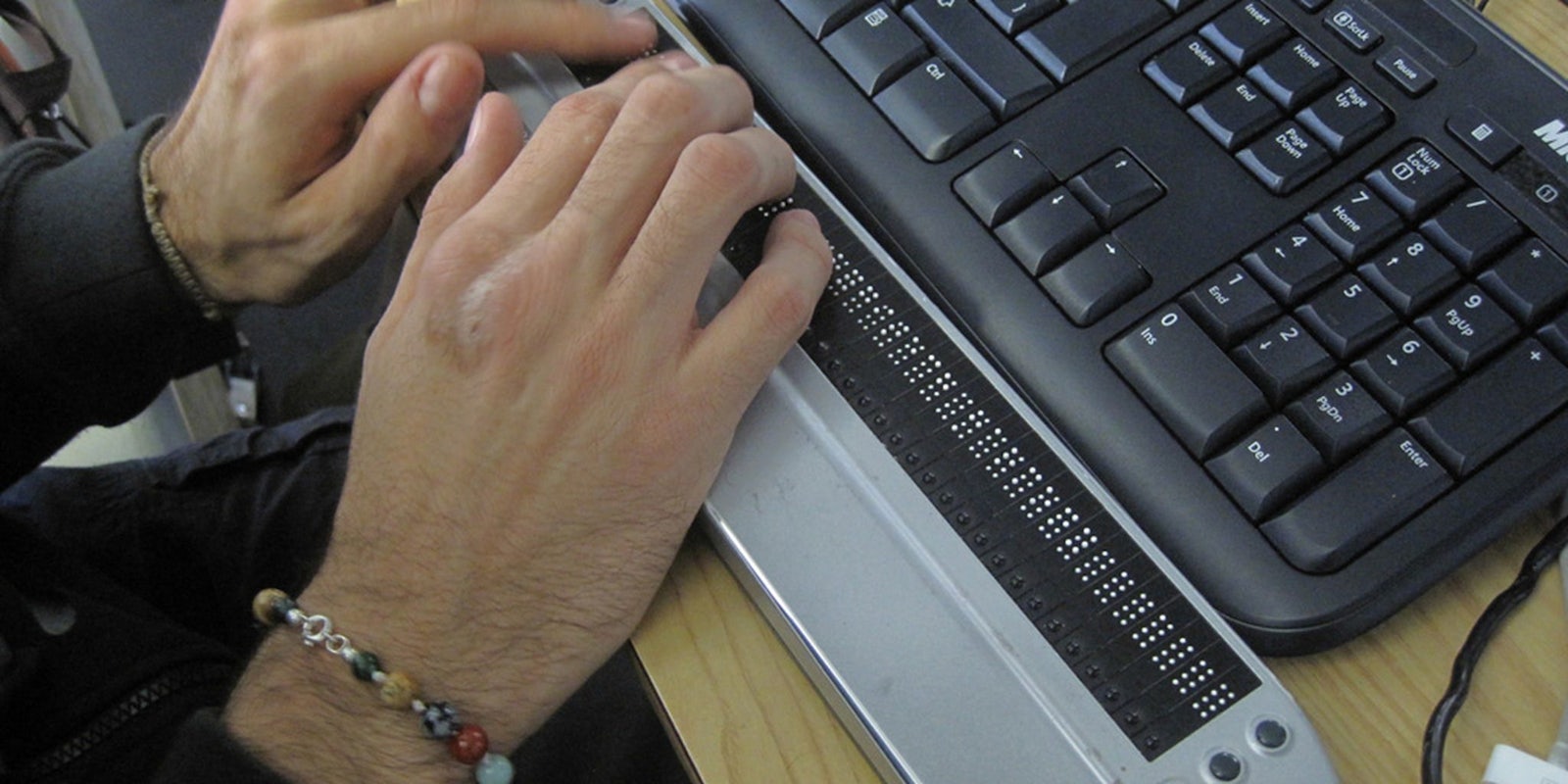When Jennison Asuncion asked a large group of LinkedIn summer interns if they were familiar with the term “accessibility,” only two people raised their hands.
Asuncion, who leads LinkedIn’s accessibility team, says the interns’ general ignorance around making the Web easy for everyone to use illustrates a larger problem. Accessibility issues are absent from the curriculum in most college-level computer science courses—and those same courses train the young minds of Silicon Valley.
Asuncion hopes that a new project founded by volunteers from major tech companies could change that. When it gets up and running, the Teaching Accessibility initiative will encourage developers, designers, and engineers to build inclusive, accessible apps and services. Microsoft, LinkedIn, Facebook, and Dropbox, are among those participating in Teaching Accessibility, along with top universities like Stanford and Georgia Tech, to create a set of best practices and standardize accessibility lessons for computer science students. Companies will also establish a standard for marketing job descriptions that note a preference for knowledge of accessibility development. The group has already been touted in the media for its potential positive impact.
“It’s a voluntary group,” Asuncion said in an interview with the Daily Dot. “One of the issues we are trying to tackle is getting future tech graduates from all the colleges and universities studying computer science exposure to accessibility while they’re still in school. The hope is, once they come into the tech workforce, they’ll have that skill set and will be able to implement that and make more products accessible.”
Making apps accessible means people with disabilities like impaired vision, hearing, or motor skills can use services as effectively as someone without a disability. Implementing accessibility into apps and websites is often ignored, especially among startups with smaller target markets. The idea is that it’s easy to overlook something necessary to building a diverse user base when you don’t share similar experiences—especially if you don’t learn about it in school.
In the U.S., two percent of adults say they have a disability that makes it hard or impossible to use the Internet. Just 54% of adults with disabilities use the Internet, compared to 81% of those who don’t report having a disability, according to Pew Research.
Launched as a relatively sparse website, the new organization is focusing on four major pain points: core education, academic leadership, learning tools, and industry initiatives. While major players are involved in the launch, which coincides with the 25-year anniversary of the Americans with Disabilities Act, there’s not yet much information on how these initiatives will be implemented. According to people involved with Teaching Accessibility, it’s only in the last month or so that the project has gained any traction.
Asuncion and his counterparts at various tech companies are meeting with universities next week to begin the conversation around how to build accessibility into the class rubrics. Some universities including California State University, Northridge and Boston University already require accessibility coverage in computer science programs.
Teaching Accessibility does not yet have a deadline set for partner universities to begin requiring such training; it could be integrated into courses as soon as the end of this year, or, potentially, never. The ideas are so nascent that the organization’s site was only registered on July 9.
It remains unclear how much monetary backing each of the tech giants is throwing behind these goals—no one would confirm how much of a financial investment, if any, is being made.
Encouraging students to focus on accessibility and teaching them to think inclusively about creating services that anyone can use is a huge step towards to making an accessible Web the norm. The new partnership isn’t geared toward companies themselves, but rather the technical talent that they might recruit. Some companies already focus on these issues internally, including Yahoo, Microsoft, Facebook, and Linkedin, which all house accessibility labs in which products are designed to be available to everyone.
Asuncion said that despite its apparent lack of actionable goals, Teaching Accessibility received positive feedback from the disability community, where people have discussed the issue for years. The first step, Asuncion said, will be holding monthly meetings with the volunteer representatives from companies and colleges in order to kickstart the initiative.
Teaching Accessibility has the potential to change the way students think about building apps and products. Until then, it’s just promises on a website like so many other Silicon Valley initiatives.
Photo via visualpunch/Flickr (CC BY SA 2.0)


